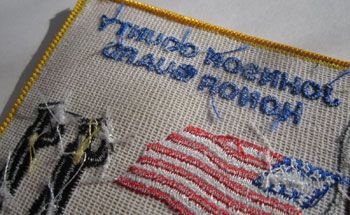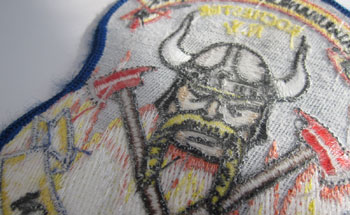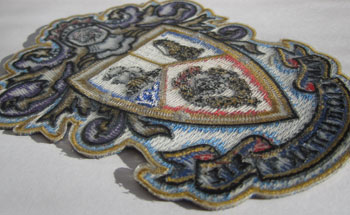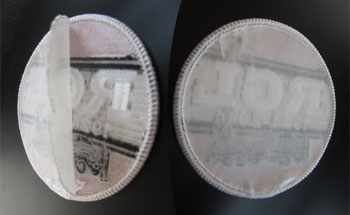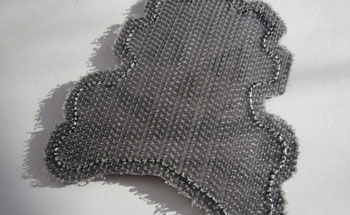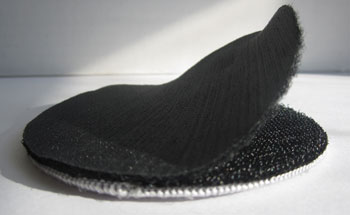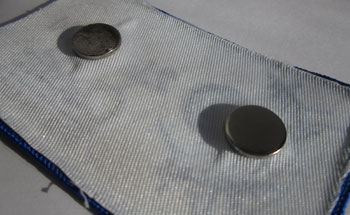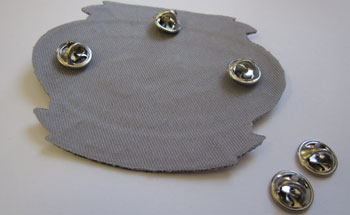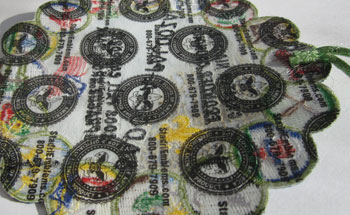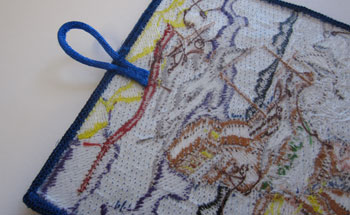No Backing
Embroidered patches can be made without a backing. If fact, they start out that way. These patches will show the twill or threads on the backside of the patch, and are generally more flexible. Patches without backings do not have the same thickness or stiffness as patches with backings; therefore, the best occasion to order patches without backings is when they will be sewn onto garments or other types of fabrics.
Click on the image for a close-up, detailed view of the back of this non-backing patch.

